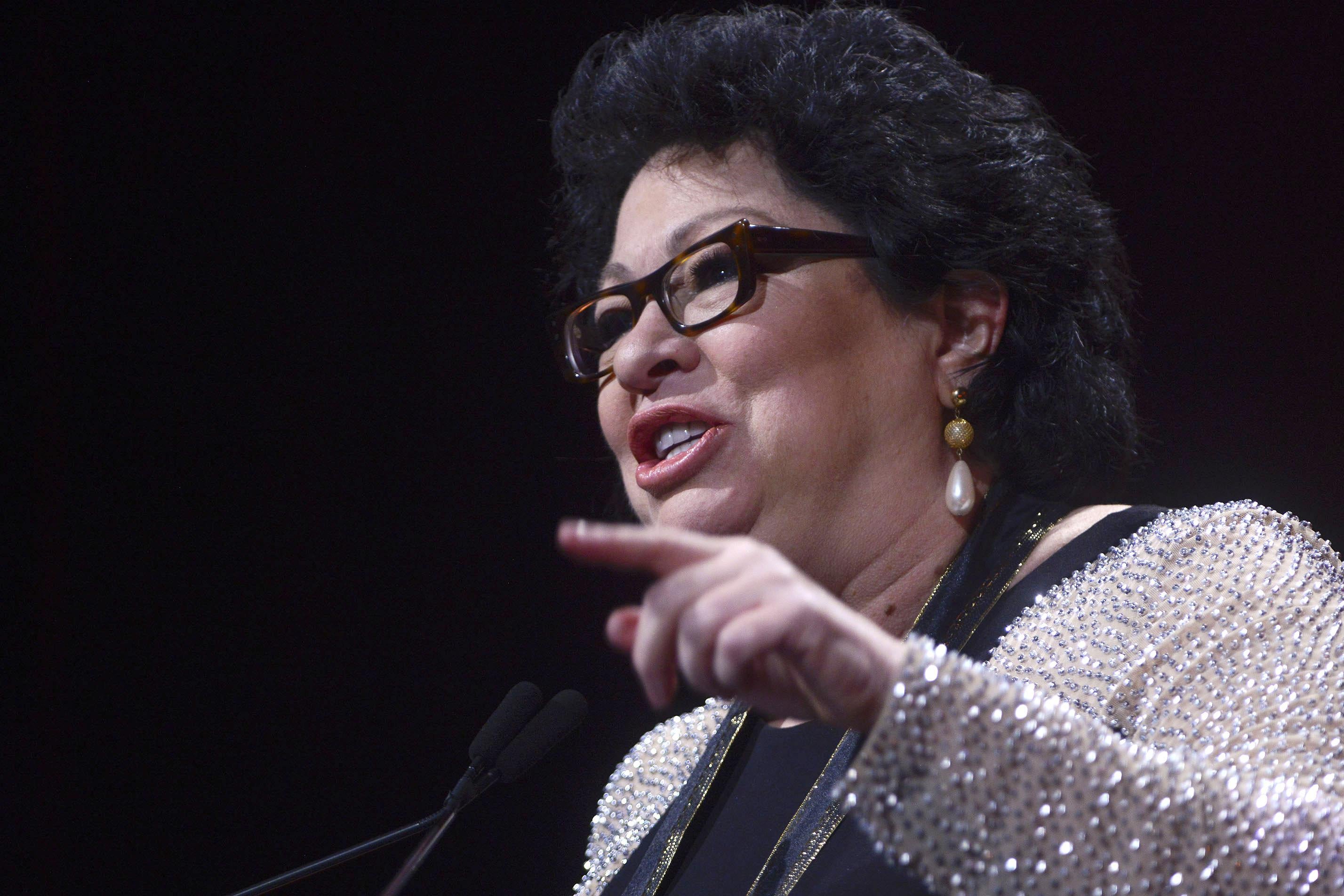On Friday night, the Supreme Court’s conservative majority bent a series of bedrock rules to ensure the immediate execution of Dustin Higgs. Several hours later, Higgs became the thirteenth victim of the Trump administration’s quest to revive the federal death penalty after a moratorium of nearly two decades. All three liberal justices dissented, and Justices Stephen Breyer and Sonia Sotomayor each wrote to express their disgust with the conservative majority for facilitating Trump’s rush to kill as many prisoners as possible before Jan. 20.
Friday’s decision in U.S. v. Higgs appears to be unprecedented. A district court had halted Higgs’ killing, finding that it may be illegal. Federal law requires a federal death sentence to be implemented “in the manner prescribed” by the state in which it was imposed. But Higgs was sentenced by a federal court in Maryland, which abolished capital punishment in 2013, so there is no “manner prescribed” for Higgs’ execution. An appeals court upheld the district court’s stay, setting oral arguments for Jan. 27. On Jan. 11, Trump’s Department of Justice asked the Supreme Court to clear away these roadblocks. In a stunning move, the court agreed: It issued a summary decision on the merits of the case, short-circuiting the traditional appeals process. The court directed the government to kill Higgs using the execution protocol in Indiana, where he was imprisoned. It did not explain its reasoning. Higgs was killed shortly thereafter.
What the conservative justices did in this case is beyond extraordinary. Under almost all circumstances, the Supreme Court waits for an appeals court to issue a judgment before taking action. On those rare occasions when SCOTUS lets a litigant leapfrog over the appeals court, it typically issues a “stay pending appeal,” setting aside a stay while the appeals court mulls the case. Here, however, the Supreme Court simply issued a summary decision, without oral arguments or proper briefing. It ruled that Higgs may be lawfully executed using Indiana’s lethal injection rules. We do not know why the court arrived at this conclusion, because it did not provide a single word justifying its decision. The Supreme Court’s conservative justices have weaponized the shadow docket.
It’s easy to see why the conservatives didn’t explain their ruling: The only justification for such an extraordinary maneuver is the fact that Joe Biden will soon restore the moratorium on federal executions. If Higgs’ execution were delayed much longer, it would not occur at all. This fundamentally political consideration is the only reason for the Supreme Court to short-circuit the appeals process. The executive branch embarked upon a mad dash to kill death row inmates before Biden’s inauguration. And the Supreme Court played along, changing the rules to help the Trump administration squeeze in more executions before Biden takes office.
Sotomayor did not attempt to conceal her horror. She began her dissent by naming each victim of Trump’s death campaign:
After seventeen years without a single federal execution, the Government has executed twelve people since July. They are Daniel Lee, Wesley Purkey, Dustin Honken, Lezmond Mitchell, Keith Nelson, William LeCroy Jr., Christopher Vialva, Orlando Hall, Brandon Bernard, Alfred Bourgeois, Lisa Montgomery, and, just last night, Corey Johnson. Today, Dustin Higgs will become the thirteenth. To put that in historical context, the Federal Government will have executed more than three times as many people in the last six months than it had in the previous six decades.
“Throughout this expedited spree of executions,” Sotomayor wrote, “this Court has consistently rejected inmates’ credible claims for relief.” It has “repeatedly sidestepped its usual deliberative processes, often at the Government’s request, allowing it to push forward with an unprecedented, breakneck timetable of executions.” And “few of these decisions offered any public explanation for their rationale.” She continued:
This is not justice. After waiting almost two decades to resume federal executions, the Government should have proceeded with some measure of restraint to ensure it did so lawfully. When it did not, this Court should have. It has not. Because the Court continues this pattern today, I dissent.
Sotomayor then walked through the various legal uncertainties that have plagued each of the government’s recent executions. The Supreme Court has ignored compelling evidence that prisoners would die torturously painful deaths in violation of the 8th Amendment. (Higgs himself was infected with COVID-19 at the time of his death; the infection had damaged his lungs, and medical experts testified that he might experience the sensation of waterboarding as he died on the gurney.) The court has ignored evidence that prisoners are intellectually disabled or especially vulnerable to extreme agony during lethal injection. And it has made a mess of the Federal Death Penalty Act, allowing lower courts to ignore or rewrite its requirements to speed up executions. Many if not all of the recent executions may violate both federal law and the 8th Amendment.
“There can be no justice on the fly in matters of life and death,” Sotomayor concluded. “Yet the Court has allowed the United States to execute thirteen people in six months under a statutory scheme and regulatory protocol that have received inadequate scrutiny, without resolving the serious claims the condemned individuals raised. Those whom the Government executed during this endeavor deserved more from this Court. I respectfully dissent.”
There is an unbridgeable divide between the two wings of the court in “matters of life and death.” The conservative justices believe that appeals from death row inmates should generally be rejected as mere stalling tactics. Under this view, courts should dismiss such appeals almost automatically so the government may kill the inmate straightaway. The liberal justices, by contrast, believe these appeals should be given careful consideration, since death is the ultimate penalty, and an unlawful execution may not be corrected. But the conservative justices have won this debate. The Supreme Court has become Trump’s greatest ally in his last-minute killing spree.
